Table of Contents
Melodic house music is such an over-saturated genre that you need to make incredibly unique music if you want any hope of standing out. While that may seem like an insurmountable hurdle to cross, it can be comforting to know that there is an almost infinite number of ways you can leverage your production chops to cut through the noise and get noticed by some of the top labels in the genre.
You can write unique melodies, use creative plugins in avante-garde ways, and process your synths and samples in different ways to bring unique textures into your music. More often than not, you should use a combination of all of the above to make the best music you can!
Robby East is one of the most talented up-and-coming producers in the industry right now, and every release he puts out is a masterclass in everything I mentioned above. Every track has a warm and rich texture, heartstring-pulling melodies, and an overall vibe that stays with you. He’s also incredibly generous in sharing the sauce on how he makes his tracks, so we invited him back on for a second feature in this series in as many months so listen to the track below a few times over to familiarize yourself with the sounds he’s going to be chatting about and then dive into the latest iteration of our series How It Was Made: Robby East – Melody For The Misfits (This Never Happened).
[embed]https://youtube.com/watch?v=LQ1s4XKcTiY&si=CVFIAnZEqUJUwom7[/embed]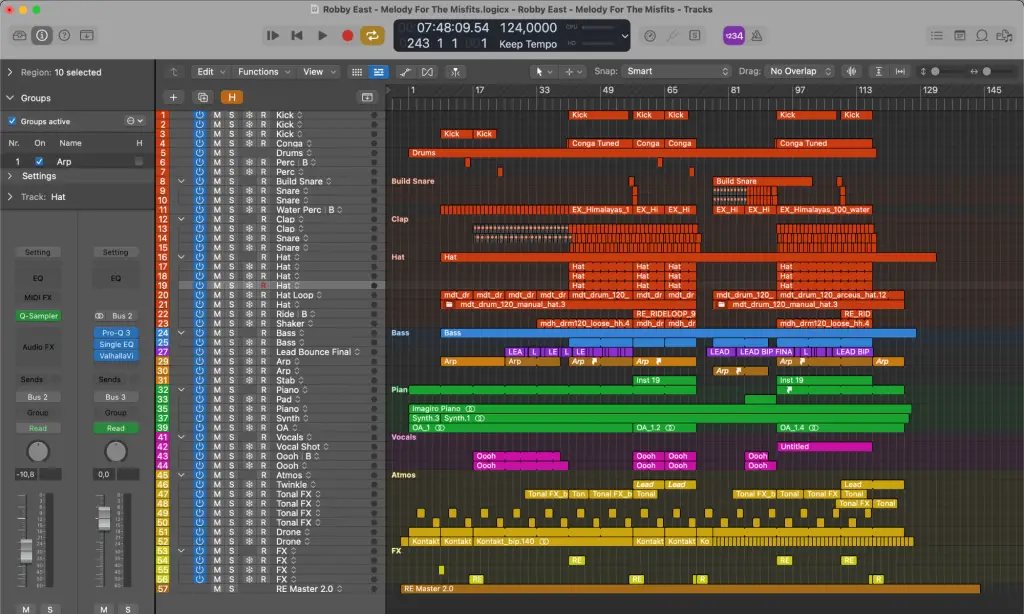
Diva
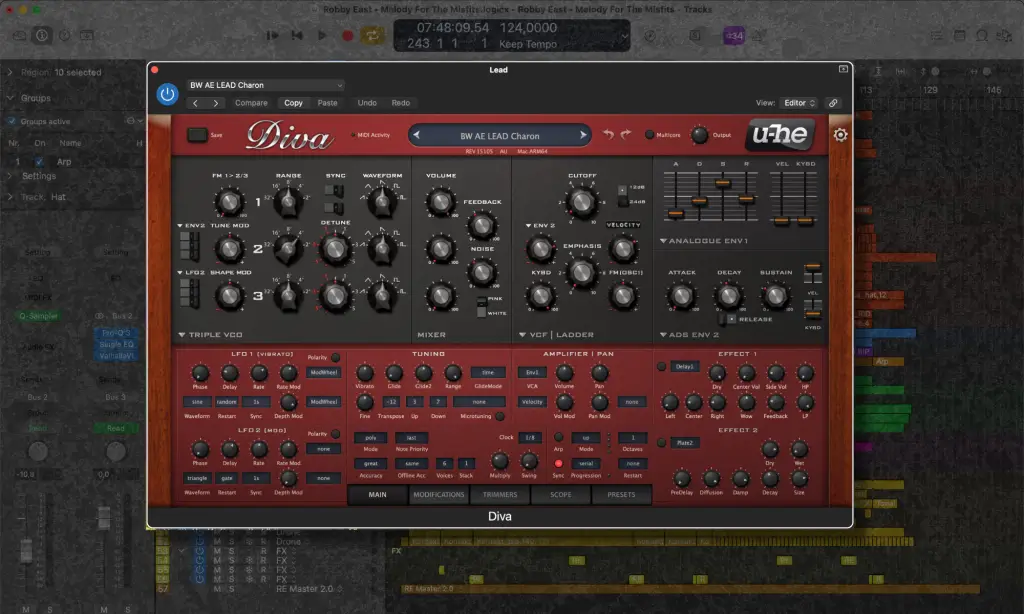
Second time writing about Diva here, but that tracks since I use it for most of my
sounds. Diva is a soft synth that combines different modules for the oscillators,
filters, and envelopes to mimic famous hardware synthesizers like the Minimoog, Juno etc. It has
a warm and analog feeling to it, which is essential in my music style.
I started with a lead preset called ‘Charon’ from Bound to Divide. It’s a relatively
straightforward saw patch but it sounds very grand and dramatic. I adjusted the envelopes and
filter module to my liking and automated the cutoff. For external processing, I added an Ozone
Imager, a (Logic) compressor, Saturn 2 for distortion, an EQ, and some delay and
reverb.
Something I also discussed in the ‘Overwater’ is how it’s made, but linking the
velocity to the filter cutoff is something I always try to do for extra control. As you can see I did
that here too (the knob bottom right to the filter cutoff). This way, I can accentuate specific notes
and put more emotion into the melody by playing certain notes harder or softer.
Learn More About This Synth Here
THE OVEN
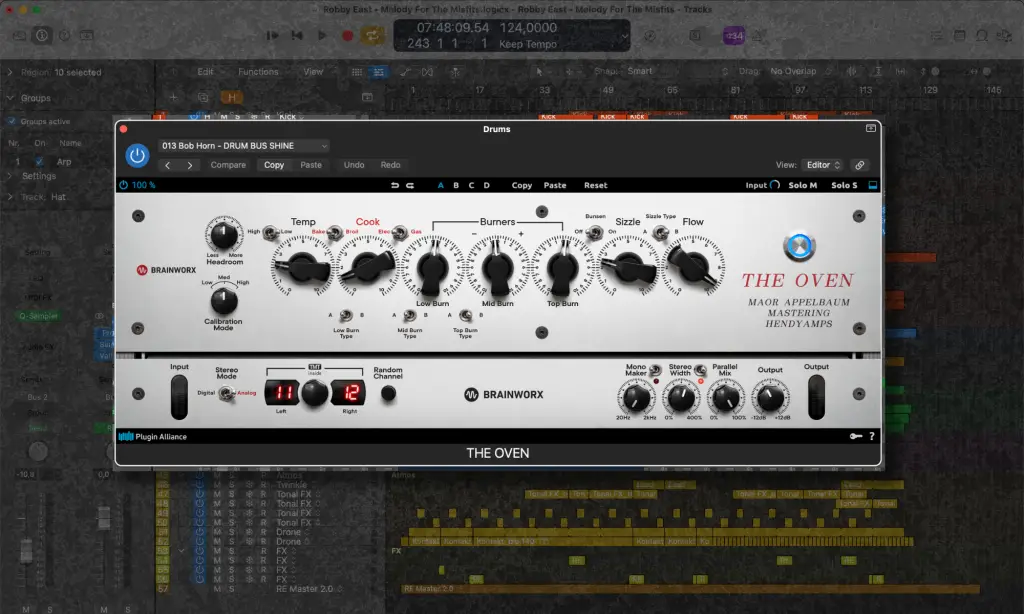
THE OVEN by Maor Appelbaum Mastering & Hendyamps. This plugin kept being recommended to me by some very technical producers and audio engineers, so I had to check it out. It’s a software emulation of a hardware unit, also called The Oven. It’s some kind of saturator but has an interesting approach to it. There’s no drive knob, but they all have names such as Sizzle, Temp, Burn, etc., so it takes some getting used to.
It has a very high quality and analog sound to it though. I tend to use this most on drums. I still don’t know exactly what every button does, but there are loads of presets, so I scrolled through the presets made for drums and tweaked some knobs a little bit till I was happy with the result. I’m still learning about this plug-in, but I can recommend it if you’re looking for some subtle but high-quality saturation and coloring to add to your sounds.
There’s a lot of room to tweak (as opposed to some saturators that maybe have a few modules and only a drive and mix knob) so you can achieve a bit more of a unique sound.
Learn More About This Plugin Here
TAL Reverb 4
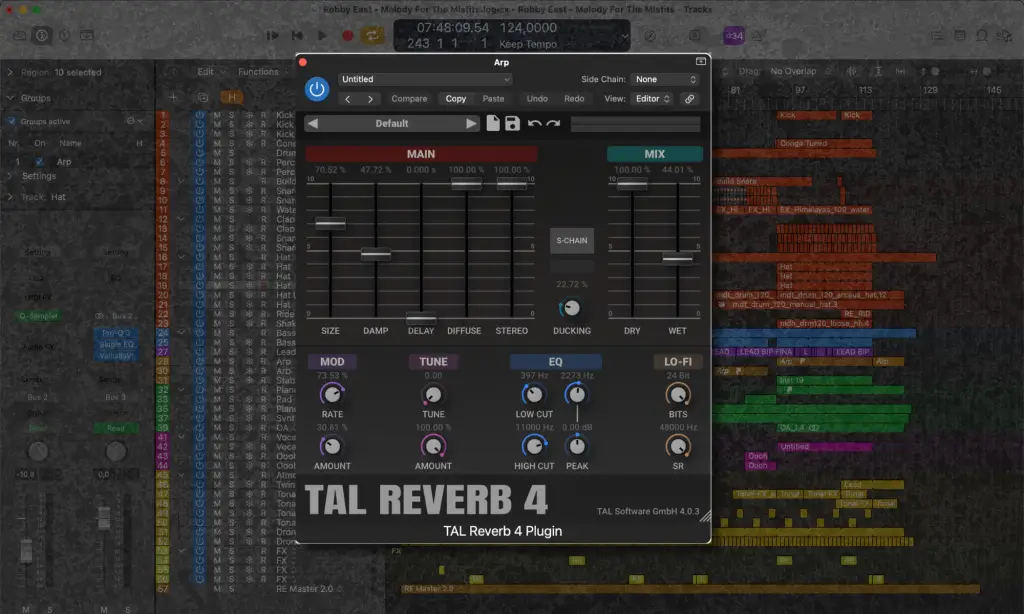
The TAL Reverb 4 plugin is a free(!) plugin with a bit more of an old-school
sound to it. It’s not my go-to reverb, but I grab it when I need a bit more of a gritty reverb or when
I’m looking for one of the specific parameters it offers, like the tuning, bit-rate, sample rate and
most importantly (for me) the ducking function.
I use this on synths or vocals mostly, it works on anything really. The built-in ducking function is convenient for vocals or lead melodies; it will lower the volume of the wet signal while the dry signal is playing without having to set that all up through a bus channel and a compressor.
Since it’s a freebie, I recommend adding it to your arsenal and playing around with its unique qualities, like tuning, bit rate, sample rate, and ducking. Turning up the tuning 7 or 12 semitones can have a really nice effect for atmospheric sounds as well.
LFOTool
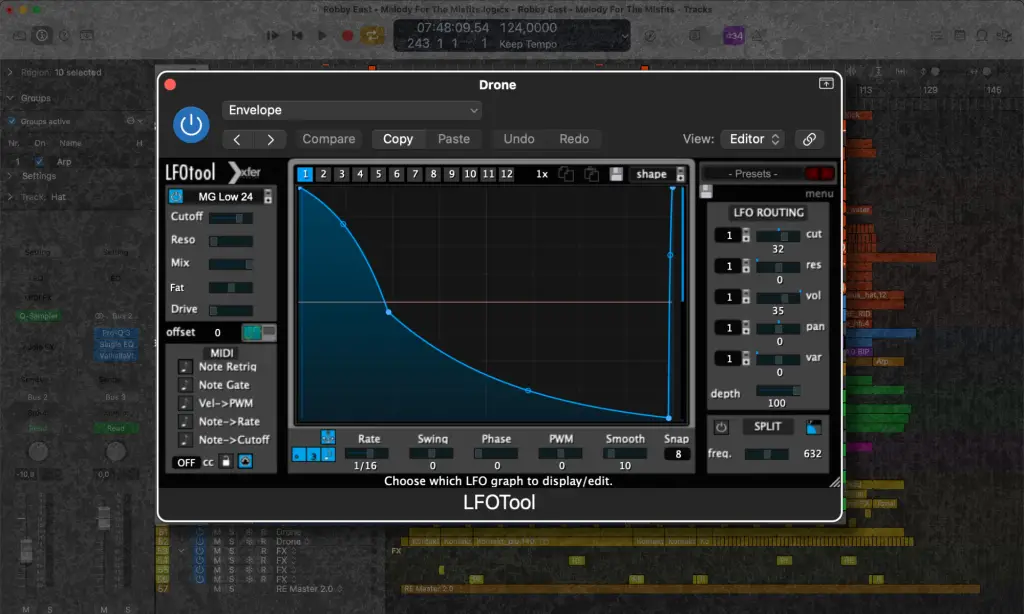
You haven’t heard many people about LFOTool anymore since VolumeShaper and Shaperbox entered the market, but I still love this plugin for its simplicity but still endless possibilities for volume shaping. It has all the same built-in filters as Serum (including the comb filters, reverb filter, etc.), which are really good, and MIDI control. I use this mostly for ducking the volume of all instruments when the kick hits, but I also use this a lot to create more movement on atmospheric sounds.
In this track, I added a 1/16 envelope linked to both the volume and cutoff on a drone sound with a constant shape/volume. I then automated the placement of the dot in the middle to make the envelope shorter and longer throughout the track. I’m sure you can achieve this in other volume-shaping plugins as well, but the principle of adding a volume shaper on a constant sound like a pad or drone is an excellent way of adding movement to a ‘flat’ sound.
You can then automate various parameters, like the amount and shape of the envelope, to add even more movement and dynamics. In LFOTool, you can also add Serum filters and filter drive to add some more power and grit.
The post How It Was Made: Robby East – Melody For The Misfits (This Never Happened) appeared first on Magnetic Magazine.



